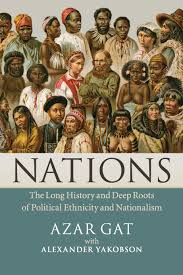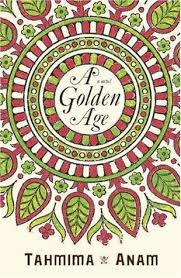 Much of the discussion over the last few weeks on this weblog (see “Open Thread”) has involved the internal politics of India, and its clearer trajectory in regards to a Hindu sense of self. Most of the comments are not really worth reading, as they repeat platitudes. I have said little because I know very little which would add much to the discussion.
Much of the discussion over the last few weeks on this weblog (see “Open Thread”) has involved the internal politics of India, and its clearer trajectory in regards to a Hindu sense of self. Most of the comments are not really worth reading, as they repeat platitudes. I have said little because I know very little which would add much to the discussion.
That being said, let me take a break from pre-Christmas activities, and just express the framework or “filter” which I use to understand what’s going on in India (and elsewhere) today. I am not someone who believes that to understand modern social-political ideologies in post-colonial nations all you need to do is understand the colonial experience. On the contrary, I lean toward the position that many national identities have deep roots and histories (e.g., China, Iran, and England, to name three). For more on this perspective, see Azar Gat’s Nations.
But, neither is it true colonial, Western, and international, currents are irrelevant in understanding notionally primal and indigenous nationalists and pan-nationalisms. To give three examples. Chinese nationalism in the early 20th-century explicitly looked to the West, and east toward the success of Japan, in attempting to create a post-imperial identity. Iran in the early 20th-century coalesced around a resurgent Persian national identity in a multi-ethnic society which had heretofore been bound together by Shia Islam (imposed on Iran by Turkic Safavids in the 16th and 17-century). Finally, the emergence of the German nation-state under the Kleindeutschland vision is hard to understand without the French Revolution, and the shock it imposed on German elites, and in particular the Prussians.
These three instances are clear, distinct, and organic nationalisms. In many ways, elements and configurations of these nationalisms were preexistent to the 19th/20th-century variety. The Safavid state under Shah Abbas I to me served as a template for the Pahlavi project. There were inchoate elements of German nationalism in various polities of the Holy Roman Empire, in particular in the Habsburg domains, where aristocratic cosmopolitanism was always balanced with the hegemony of German culture around Vienna. Finally, the imperial Chinese state in various forms was already proto-modern quite early. I would emphasize the Northern Song period, around 1000 A.D.
But there are other nationalisms developed in the 20th-century which created something de novo in a very real sense. Kemal Ataturk attempted to fashion a form of Turkish post-Ottoman identity explicitly modeled on a Western European template. Though Ottoman Turks did have an ethnic identity, and some level of ethnic chauvinism, the reality is that the Ottoman identity was primarily one of religion. Modern Turkish is written in a Roman alphabet. This means that modern Turks are detached psychologically from the literature of the Ottoman period, which is written in Arabic script. This was clearly a conscious attempt by Ataturk to fashion something new and unmoored from the past.
Even more nebulously, Pan-Turkism and Pan-Arabism appealed to an ethnonationalism more organically suited to the European context and history. Though Pan-Turkism never became much more than moral and logistical support by the Turkish government for various national resistance movements (Turkey has long supported a community of Uighurs), Pan-Arabism was influential in much of the Arab world in the middle of the 20th-century.
Pan-Arabism was closely connected to Arab Nationalism and in particular the Ba’ath parties. A reductive way to describe Ba’athism is that it was a escape valve for religious minorities to espouse a form of nationalism that united them with Muslims, and often Sunni, majorities. But Ba’athism became popular for a reason. The rationale for Ba’athism may have some connection to the discomfort with majoritarianism by minority elites in the Arab world, but the 20th-century demanded a form of social cohesion beyond what Sunni Islam had earlier provided (the radical Leftism of some Arab nationalist movements is another path).
Because of Arab opposition to Western imperialism in the early 20th-century, it is not surprising that Ba’athism has been connected in some way to fascism. The problem with our understanding of fascism and right-wing nationalism in the early 20th-century is that Nazism has overshadowed all other forms. But movements to challenge Communism’s appeal to the young and radical were diverse and widespread. For example, right-wing Zionism of the Revisionist school (the ideological ancestors of the Likud party) had connections to these broader trends.
Which brings me to three ideologies which also arose in the modern period: Hindu nationalism, Pan-Islamism, and the “Two-nation theory.” Hindu nationalism and Pan-Islamism arose at the same time, as notables and intellectuals within Hindu and Muslim traditions reacted to the shock of Western modernity. Both these traditions have a mythos of being primal, but the reality is that many elements are quite modern.
To illustrate this, the Iranian Islamic Republic was an explicit attempt to turn back toward indigenous forms and values, but it retains a broad democratic system of governance (democracy being Western). The Shia movement in Iran clearly had resonances with earlier Pan-Islamists, in particular in its early ambitions, and over the past few centuries had integrated and reacted to stimuli from the West far more extensively that modern traditionalist Shia establishments.
Hindu nationalism is in a similar boat. On the one hand, its roots are ancient, and it reflects a vision with deep local roots. But it has had to adapt and develop tools which are quite modern, and only comprehensible in the modern context. Which brings us back to some associations of right-wing Hindus with right-wing movements elsewhere…and a connection to Nazis and genocide.
You could present the case that Hindu nationalism is particularly pernicious at the root. It is brown Nazism of a sort. I am very skeptical of this take, because Hindu nationalism has a rationale of its own, and must be viewed as an indigenous reaction to Western imperialism. Palestine’s Zionist Revisionists associated with Italian fascists in the 1930s. If you know the history of Italian fascism this is not so peculiar. Similarly, various Arab notables and nationalists expressed pro-fascist, and later even pro-Nazi views. Some of this is due to shared affinity because of common enemies, while some are purely mercenary and situational.
This brings me to the “Two Nation Theory.” As above, this is based on a myth. The collapse of Ashraf hegemony, the rise of Indian Muslims, reconfigured the social and political landscape. Muhammed Ali Jinnah was the grandson of a Hindu merchant of ambiguous sectarian affiliation who was personally not particularly pious. The idea of an Indian Muslim nation makes sense for such a man, but not the Turco-Persian grandees of yore.
For various reasons, the Indian republic rejected this vision. I believe that in doing so they rejected the march of history, which has been toward greater sectarian identity and passion. Western commentators attempt to understand Hindu Nationalism on their terms, but just like the rise of an indigenous Indian Muslim identity is now stripped of West Asian accretions in the substance*, Hindu Nationalism is not comprehensible without understanding the interests and foci of native elites.
Where does this leave us? Everywhere and nowhere. In the past and looking to the future. Extracted out of the context of world history over the past 200 years Hindu Nationalism can seem uniquely invidious. But I doubt it is so unique at all. Rather, it is a novel cultural complex that draws deeply on indigenous atavisms. It is part of a broader waxing of local movements the world over.
* Pakistanis may claim West Asian origins or associations, but the national language is Urdu and Indo-Aryan dialect. The Ashraf of yore would have enshrined Persian as the national language.

